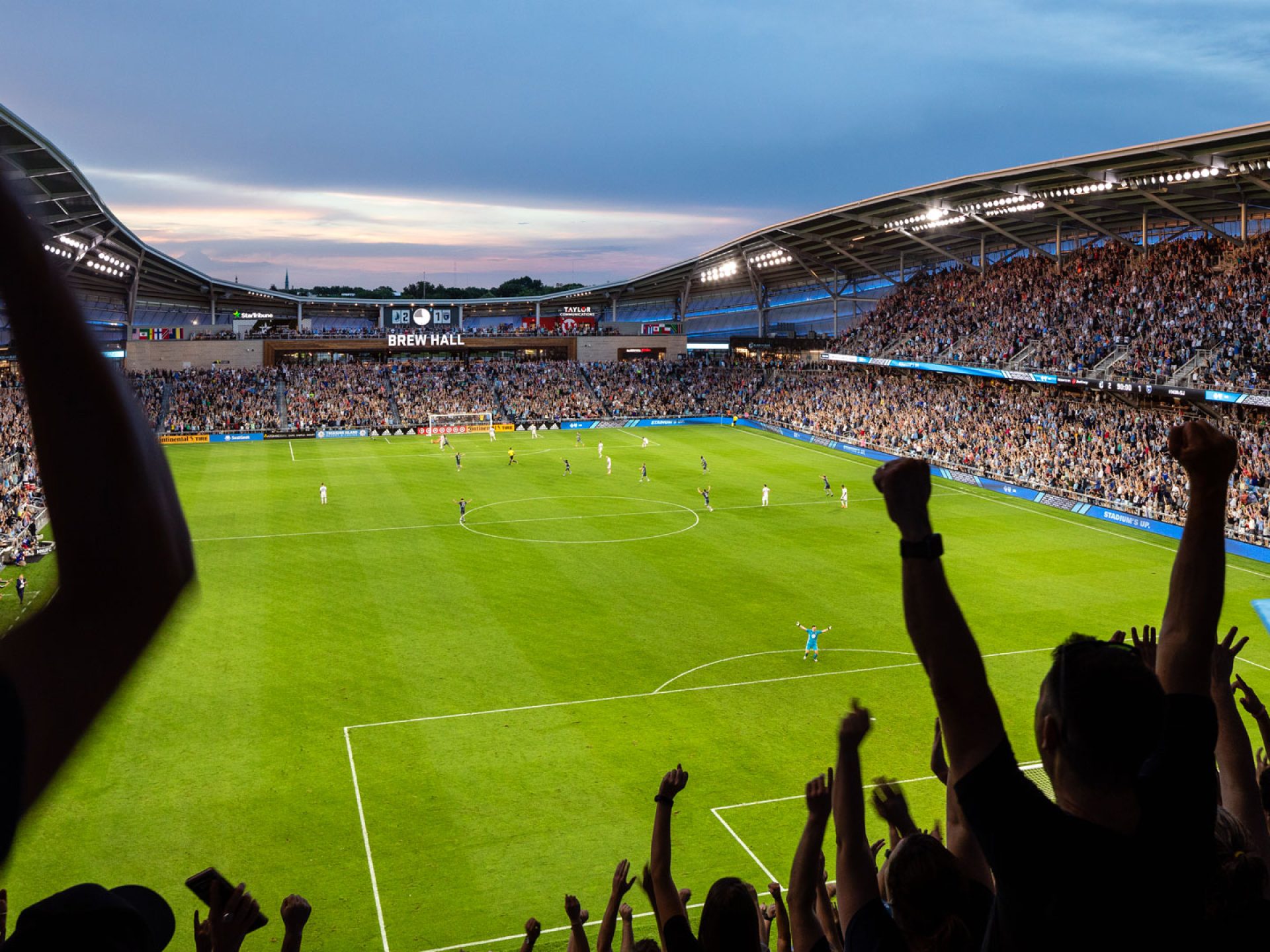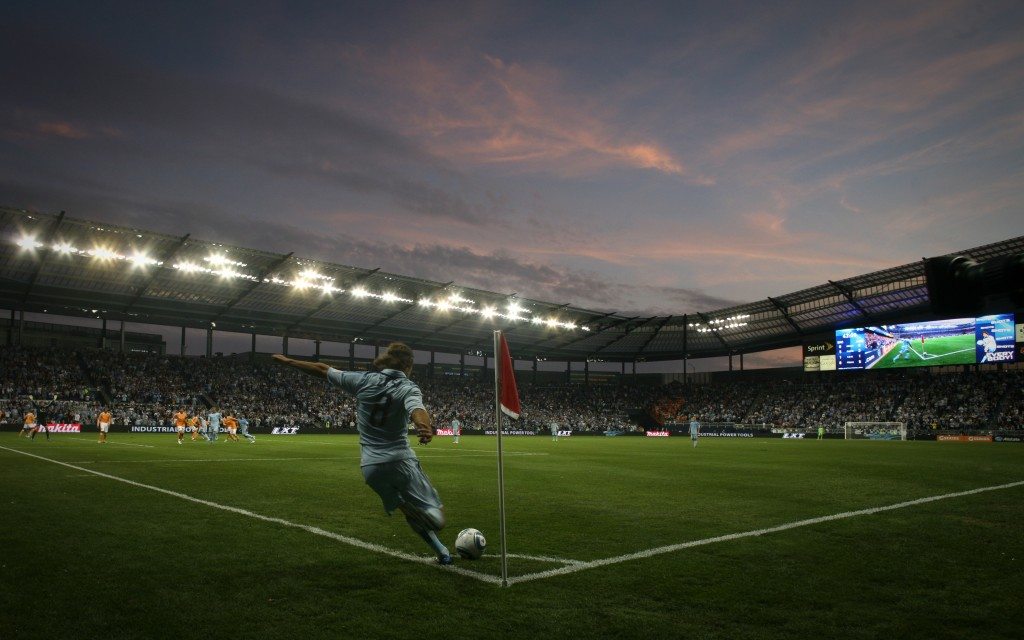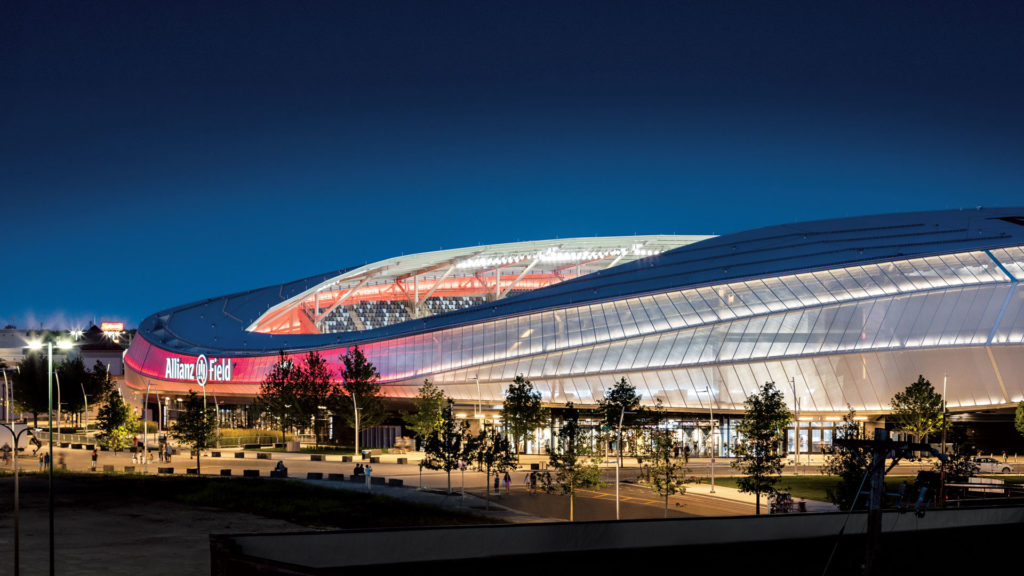October 11, 2019
The chicken and the egg: Major League Soccer edition

Which comes first: bigger crowds or bigger broadcast deals?
In 2017, Major League Soccer made headlines when it fielded an eye-opening offer of $4 billion for its global media rights. The bid was a non-starter for a number of reasons, but the message was clear: MLS and its teams are primed for a big payday when their new TV deal takes effect in 2023.
That expected windfall may translate to a facilities building boom – and with good reason. The first generation of soccer-specific stadiums coincided with unprecedented league growth starting in the late 2000s. Dick’s Sporting Goods Park in Denver, BBVA Compass Stadium in Houston and others tailored the venue to the game.
How should the next generation of MLS venues – both new builds and renovations – put new revenues to smart and sustainable use?
For starters, let’s acknowledge the next generation is here. Minnesota United, D.C. United (and soon, Los Angeles FC) have christened new soccer-specific stadiums. Capacities for all three venues fall in the neighborhood of 20,000 seats.
But many have also taken notice of Atlanta FC’s staggering attendance in Mercedes-Benz Stadium. Crowds of nearly 50,000 have filled the NFL-tailored facility, contributing to a league-wide rise in attendance. It begs the question: Should MLS franchises dare to dream bigger with their stadiums?
Sporting Kansas City and the Goldilocks principle

To best answer these questions, look to one of the keys to Major League Soccer’s success: the intimate energy of a match. When you frame the conversation in terms of experience, seating capacity becomes more art than accounting – and size matters less than substance.
Sporting Kansas City illustrates this well. The team has traveled a long road as a founding MLS franchise. Its first home, Arrowhead Stadium, created a void no supporters section could fill. The place looked empty on TV and felt even emptier in person.
Sporting, then known as the Kansas City Wizards, would eventually move from the 76,000-seat NFL stadium to the 10,000-seat Community America Ballpark. If fewer seats equaled a better experience, you would expect the minor league ballpark to be at least a small improvement over Arrowhead.
But that wasn’t the case. Community America differed little from Arrowhead in principle, because it was still a facility being used for something other than what it was designed.
Flash forward to today: the team has sold out more than 100 consecutive matches playing at a sustainably-sized Children’s Mercy Park. More important, though, is the stadium’s emphasis on the fan experience. Stadium Journey named it the #1 MLS stadium experience of 2014, while the Stadium Business Awards awarded it Venue of the Year in 2012. Years after opening, it still enjoys state-of-the-art status and tours by executives from across the sports world.
Minnesota United and the European connection

The MLS stadium of tomorrow combines awareness of both the local and global soccer community. For global inspiration, the soccer world looks to Europe. Our experience designing stadiums for some of Europe’s most prestigious clubs has taught us the importance of organic design that puts the fan first.
For an example of that philosophy applied to an MLS venue, look no further than Minnesota United’s Allianz Field. Opened in 2019, it boasts world-class qualities like a fully-enclosed canopy and dynamic stadium skin. By bottling in the energy of a match, fans are treated to a chorus of sound while the surrounding neighborhood is spared of it.
To learn more about our global approach to MLS stadium design, email Scott Capstack.
The club’s most die-hard fans are also treated to what’s quickly becoming an MLS experience standard: a safe-standing supporters’ section. We helped the league debut this stadium feature in 2017 with the opening of Orlando City SC’s Exploria Stadium.
Minnesota’s version also pairs safety with steepness, giving one of the league’s most inspiring supporters’ groups a proper perch to intimidate opponents. The group’s grassroots approach harkens back to the early days of European clubs centuries ago when they existed literally as clubs that slowly grew into professional outfits.
Growth is often at the top of owners’ minds when tempted to go big with seating capacity. Here, Minnesota United provides another valuable lesson. Allianz Field opened with just shy of 20,000 seats, but has the ability to be sustainably expanded by roughly 5,000 in the future.
Where the live ticket and TV collide
With Atlanta’s eye-popping attendance numbers and the league’s lagging TV ratings, teams may be tempted to favor the spectacle of a record-setting crowd when upgrading facilities. The next generation of venues, however, will give themselves room to grow but not at the expense of what makes the game special: its intimate and grassroots energy.
Put another way, the formula for broadcast success starts with the live experience:

Think of the venue as the chicken and the TV as the egg. If incubated right, that egg just might be worth $4 billion.
♦♦♦
Lorem ipsum dolor sit amet consectetur, adipisicing elit. Non facere corporis et expedita sit nam amet aut necessitatibus at dolore enim quis impedit eius libero, harum tempore laboriosam dolor cumque.
Lorem, ipsum dolor sit amet consectetur adipisicing elit. Illo temporibus vero veritatis eveniet, placeat dolorem sunt at provident tenetur omnis, dicta exercitationem. Expedita quod aspernatur molestias eum? Totam, incidunt quos.
